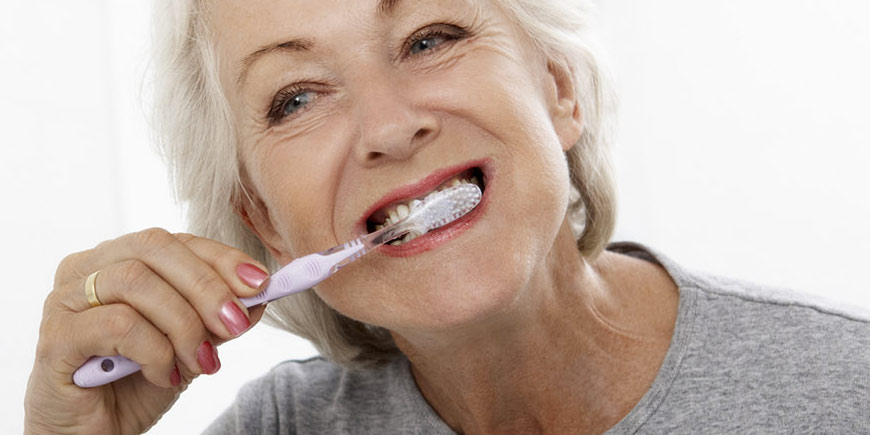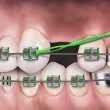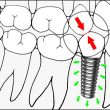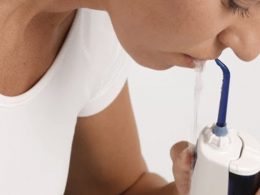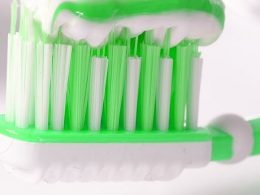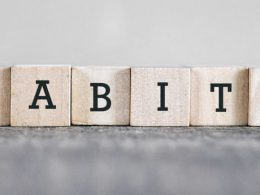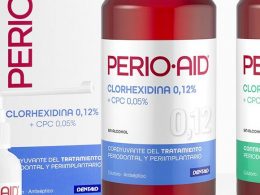Table of Contents
In general, dedicating a post to how to practice tooth brushing is an almost obligatory custom in any blog of Dentistry. And how not to, if good oral hygiene is able to prevent up to 85% of injuries and illnesses that require curative or restorative dental treatment; many times extensive, uncomfortable and expensive. Not to mention the large number of teeth that need to be extracted due to carelessness and poor oral hygiene.
However, no post (including this one) will be able to fully meet its goals. Although it contains tens of pages, images or numerous videos; none will be able to accurately instruct you on the best brushing technique. Firstly, because there is no universal or standard technique for all people, and secondly, because whatever is indicated will surely require meticulous, personalized and progressive professional training; aimed at developing the psychomotor skills necessary to achieve the greatest possible ability and mastery over the procedure.
How to Learn the Perfect Brushing Technique
Definitely, turning to your trusted Dentist!
Going to some consultations to only be trained in the various oral hygiene techniques is the best dental investment you can make in your life, regardless of your age or the current condition of your mouth.
Learn how to brush properly, flossing, use interdental brushes and other accessory resources; it takes time, dedication and effort. No YouTube video or remote resource can replace professional instruction and supervision, and even less can it detect and correct the own inaccuracies of a learning process that involves the development of very particular manual skills.
Invest in prevention and save on health and money! Suggest to your Dentist that he/she take the time to teach you and perfect everything related to the different oral hygiene techniques. It is our best advice!
Some Useful Tips About Oral Hygiene
As a support and complement to the skills and routines achieved with your trusted Dentist, the following 18 tips can be very useful as backing and quick consultation material:
1- Use a Good Toothbrush
Choose a toothbrush with soft nylon bristles. This must effectively remove plaque and debris from your teeth, without irritating the gums or eroding tooth enamel like hard-bristled brushes can do when used with sideways action. The toothbrush should also fit comfortably in your hand, and have a head small enough to easily reach all of your teeth, especially the ones at the back. If you have difficulty fitting the toothbrush into your mouth, it is probably too big.
You should avoid toothbrushes with “natural” bristles made from animal hair as these can harbor bacteria and must be replaced more frequently.
2- Use the Interdental Brush
Did you know that a toothbrush can only reach 60% of the tooth surfaces? Dental plaque builds up between your teeth where a toothbrush does not reach. It is a good idea to use an interdental brush as part of your daily cleaning routine to prevent gum inflammation, cavities and bad breath.
An interdental brush is a small brush specially designed to clean between your teeth, where a regular toothbrush does not reach. Daily use of an interdental brush in addition to regular toothbrushing and flossing, is an easy and efficient way to keep your gums and teeth healthy and fresh.
3- Replace Your Toothbrushes Regularly
The bristles will wear out over time, losing their flexibility and effectiveness. You should purchase a new toothbrush every three to four months, or as soon as the bristles start to splay and lose their shape. Visual inspection of the toothbrush is more important than the actual timeline. You can also buy toothbrushes whose handles will change color when it is time to purchase a new toothbrush.
Research has found that thousands of microbes call toothbrush bristles and handles “home,” and can cause infections. At about three months, bristles become sharp due to friction and can cause your gums to bleed.
Always rinse your brush after using it, and store it upright and uncovered so that it can dry before your next use. Otherwise bacteria will grow.
4- Use Fluoride Toothpaste
It not only helps remove plaque, but it also helps strengthen tooth enamel. It is important to note that fluoride toothpaste is not to be swallowed, as ingesting too much can have serious health consequences. It should not be used for children under the age of three.
You can get toothpaste to target a wide variety of dental and gum problems, including cavities, tartar, sensitive teeth and gums, gingivitis and stained teeth. Opt for the one that suits your best or ask your Dentist or Hygienist for advice.
5- Use Dental Floss
Flossing your teeth is just as important as brushing, as it removes built-up plaque, bacteria and food particles that get trapped between the teeth, which soft floppy toothbrush bristles cannot reach even when used with up/down natural motion. You should always floss before brushing your teeth, at least once a day, so that any food or bacteria that comes loose during brushing does not remain in your mouth.
Remember to floss gently. Do not “snap” the floss between the teeth as this can irritate sensitive gums. Ease it down gently, following the curve of each tooth.
If you find dental floss awkward to use, or you have braces, look for dental picks instead. These are small wooden or plastic sticks that you can insert between teeth, achieving the same results as flossing if spaces are large enough.
Alternatively, you can use flossers, which are small pieces of floss strung between two supports, generally with a pick at the opposite end.
6- Use a Small Amount of Toothpaste
Squeeze only a pea-sized amount of toothpaste onto your toothbrush. Applying too much toothpaste can cause over-sudsing, tempting you to spit and finish too early. Plus, it increases the risk of you ingesting more fluoride-filled toothpaste, which is very unhealthy.
If brushing is painful, try brushing more gently with accurate circle motion only or switch to a toothpaste formulated for sensitive teeth.
7- Set Your Bristles at the Gum Line at a 45-Degree Angle
Unless your Dentist has told you otherwise!
In our clinic, the most frequent technique is the modified Bass. To execute it correctly, a soft-bristled brush is recommended to avoid, first, the abrasion of the dental structure, and second, the injury to the gum due to mechanical trauma. The technique consists of placing the brush at an angle of 45 degrees with respect to the longitudinal axis of the tooth (bearing in mind that the bristles go towards the gum), inserting its filaments into the gingival sulcus, making small vibratory movements, and finally; a sweeping motion down or up, as appropriate. On occlusal or chewing faces, circular movements are recommended.
However, remember that there are many different techniques, and that only your Specialist will be able to indicate the most suitable for your oral condition. Besides the Bass technique, the horizontal Scrub technique, the Charter‘s vibratory technique, the Stillman technique and the Fones technique are very popular; to name a few.
8- Spend Two to Three Minutes Brushing
Brush just a few teeth at a time, and work your way around your mouth in a circle so that you get every tooth (spend about 12 to 15 seconds in each spot). If it helps, you can divide your mouth into quadrants: top left, top right, bottom left, and bottom right. If you spend 30 seconds on each quadrant, you will get a full two minutes of brushing time in.
Try starting at the outside lower left teeth, moving to the outside lower right, then outside upper right to the upper left. Change to inside uppers and brush inside upper right, inside lower right, and finally inside lower left.
If you get bored, try brushing your teeth while watching television or hum a song to yourself while you brush. Brushing your teeth for the duration of an entire song will ensure that you brush thoroughly!
As much additional time will be necessary for the use of the interdental brush and dental floss.
9- Brush Your Molars
Position the toothbrush so that it is perpendicular to your lips, or so that the bristles are resting on top of your bottom molars. Work the toothbrush in an in-and-out motion, and move from the back of your mouth to the front. Then complete this motion doing a rotational movement of the brush in order to eliminate bacteria that have been dislocated from the surface. Repeat on the other side of your mouth. When the bottom teeth are clean, flip the toothbrush over and work on the top molars.
To access outside top molars always swing the lower jaw to the side you are working on. This will increase the space available to move your brush up and down by several times so that no sideways motion occurs.
10- Brush the Inner Surfaces of Your Teeth
Tip the toothbrush so that the head of the toothbrush is pointing towards your gum line, and brush each tooth. Dentists report that the most commonly skipped area is the inside of the lower front teeth, so be sure not to forget those! Check that your mouth is opening wide enough by holding teeth apart with two or three fingers of your other hand. This will allow correct vertical angle to reach edge of gum.
11- Brush Your Tongue Gently
After you have cleaned your teeth, use the bristles of your toothbrush to gently clean your tongue (do not press too hard, or you will damage the tissue). This helps keep bad breath away and gets rid of bacteria on your tongue.
12- Rinse Out Your Mouth
If you choose to rinse after brushing, take a sip of water from a disposable cup, or cup your hands under the faucet. Swish it around your mouth, and spit it out.
Note that there is some debate on whether or not this is recommended. While some feel that it reduces the efficacy of the topical fluoride treatment, others wish to ensure that no fluoride is ingested. There are also those who just do not like having toothpaste in their mouths! If you are at high risk of getting cavities, it may be beneficial not to rinse, or rinse with just a small amount of water, effectively creating a fluoride mouthwash.
Other studies have shown that rinsing after brushing has no significant impact on the effectiveness of brushing with a fluoride toothpaste.
13- Rinse Your Toothbrush
Hold your toothbrush under running water for a few seconds to remove any bacteria from the brush. If you do not rinse the toothbrush properly, you can actually introduce old bacteria into your mouth the next time you use it. Rinsing also removes any leftover toothpaste.
Place your toothbrush somewhere where it will readily dry out. Otherwise, bacteria can grow.
14- Finish with a Fluoride-Based Mouthwash (Optional)
Take a small sip of mouthwash, swish it in your mouth for about 30 seconds, and spit it out. Be careful not to swallow any.
At DENTAL VIP we really like mouthwashes because they refresh the breath and provide a feeling of absolute cleanliness.
15- Rinse Your Mouth with Salt Water (Optional)
Saltwater kills the bad bacteria on your teeth. There is a rumor that saltwater is acidic and can erode teeth if used too often. It is better not to use it too often, as, like anything, too much of anything is bad.
For complete antibacterial protection, sometimes your Dentist can tell you rinse with a chlorhexidine mouthwash before going to bed, but do not use it for longer than two weeks in a row. Chlorhexidine may pigment your teeth.
16- Remember to Brush at Least Twice a Day (Three Preferably)
Most Dentists recommend that you brush at least twice a day, once in the morning and once before bed. If you can fit in a third time somewhere in the middle, even better!
As we already explained, try brushing at a 45° angle as this helps remove plaque and food/drink particles on your teeth better than if you did it normally. You should also try to avoid snacking between meals as much as possible, as this results in more food debris and bacteria building up in the mouth.
17- Consider Using an Oral Irrigator
The complexity of removing oral biofilm (bacterial plaque) in highly retentive areas such like the ones that form with orthodontic appliances, for example, can easily generate gingival inflammation, tooth decay and halitosis. A large number of clinical trials have shown that, under these conditions, Waterpik® oral irrigators eliminate 99.9% of plaque deposited on teeth, gums and hard-to-reach places; thanks to the direct application of a pulsatile jet of common water or mouthwash.
In our opinion, the irrigation technique will always be indicated as an adjunctive resource in the hygiene of patients with orthodontics, fixed prosthesis and dental implants.
18- Do Not Despise the Electric Toothbrush
Electric toothbrushes are a great choice if you are a lazy brusher and think that the electric toothbrush might encourage you to spend more time on your teeth; however, you can do just as good of a job with a manual toothbrush, it is all in the technique.
One good method is to brush with a manual toothbrush in the morning and use an electric toothbrush at night.
Electric toothbrushes may be helpful for anyone with limited mobility, such as people with carpal tunnel, arthritis or developmental disabilities.
“Going to Some Consultations Just to Train in the Different Oral Hygiene Techniques Is the Best Dental Investment You Can Make in Your Life”.
DENTAL TIP
Are You Facing an Unaffordable Quote for Dental Treatment?
Are you thinking of getting Cosmetic Dentistry or Dental Implants in Venezuela? The rising cost of dental care in many countries is driving the Dental Tourism movement as people seek more affordable dental work abroad. If you are facing an unaffordable quote for dental treatment in your home country, DENTAL VIP could be a much cheaper alternative with savings of 60% or more.
Every year thousands of international patients visit Caracas to take advantage of high quality healthcare at affordable prices. Dental procedures in Venezuela are on par with treatment provided in any “developed” countries of the world. The cost, however, is significantly less.
At DENTAL VIP we offer a wide range of world class dental treatments such as Dental Implants, Crowns and Bridges, Smile Design, Dental Veneers, Oral Surgery and Zygomatic Implants; among others.
Furthermore, we are available to assist you with transfer and accommodation options while visiting Caracas for dental care. Contact us today and make your next treatment in Venezuela!






